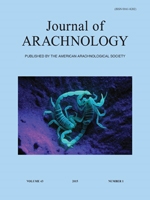Despite the importance of tarantulas in the areas of medicine and veterinary science, there is very little information on parasitoid-tarantula interactions. The present study describes the case of an endangered tarantula, Brachypelma vagans Ausserer 1875, infested by an endoparasitoid in the field. Using DNA barcoding, we identified the parasitoid as the phorid Megaselia scalaris. With more than 500 fly larvae inside the host, this particular infestation can be considered severe. The size range of the larvae indicates infestation by all three larval instars. We discuss the possible mechanism by which the parasitoid is attracted to the tarantula and make important recommendations regarding improvements in tarantula-rearing conditions. Finally, this case study exemplifies the efficiency of molecular technology for parasitoid identification.
How to translate text using browser tools
1 April 2015
Megaselia scalaris (Diptera: Phoridae): an opportunistic endoparasitoid of the endangered Mexican redrump tarantula, Brachypelma vagans (Araneae: Theraphosidae)
Salima Machkour-M'Rabet,
Ariane Dor,
Yann Hénaut
ACCESS THE FULL ARTICLE

The Journal of Arachnology
Vol. 43 • No. 1
April 2015
Vol. 43 • No. 1
April 2015
DNA barcoding
humpbacked flies
larvae morphology
parasitism
spider




